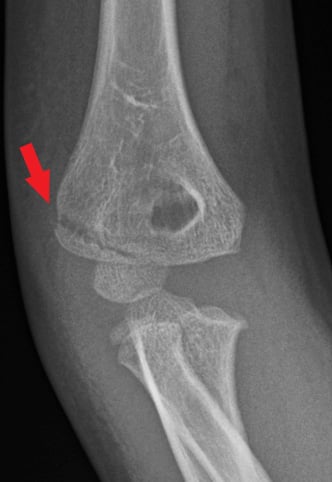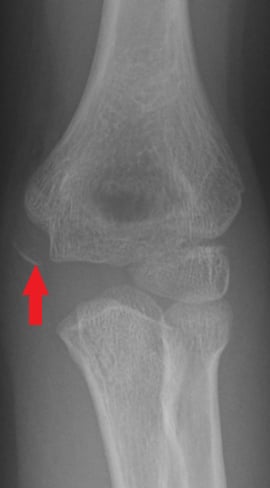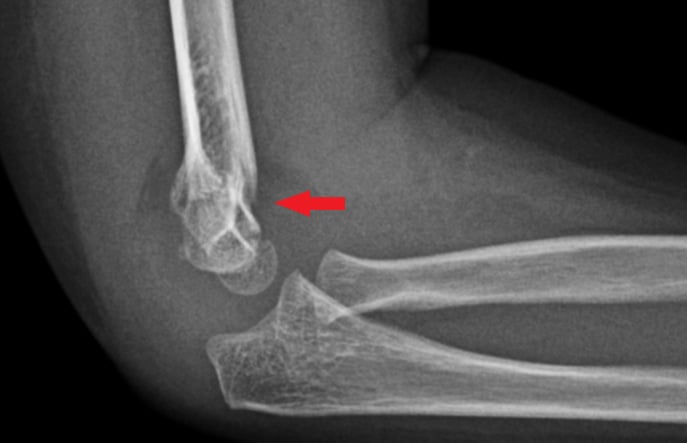Elbow Fractures
Fracture Treatment at Children’s Mercy
Elbow fractures are very common in children. Fractures can involve any of the 3 bones in the elbow joint: the humerus (upper bone of the arm extending from the shoulder to the elbow), the radius (forearm bone that extends from the outside of the elbow to the thumb side of the wrist) and the ulna (other forearm bone extending from the inside of the elbow to the pinky side of the wrist).
Occult, or “hidden,” fractures of the elbow frequently occur where there is no obvious fracture line on initial x-rays but there is significant swelling. This is typically treated with a few weeks in a cast or splint. Other types of elbow fractures are treated much like other fractures: non-displaced fractures are treated with a long-arm cast. Displaced fractures are either realigned by means of a closed reduction (repositioning the bone without surgery) and subsequently casted, or the fracture is fixed with surgery.
The most common surgical fixation of the elbow involves pins to hold the fracture in place while it heals in a cast, typically for around 4 weeks. Then the pins are removed in clinic when the cast is removed. Any weakness and stiffness of the elbow after the cast is removed typically resolves within a few weeks or months, but can be treated with physical therapy if needed.
Examples of elbow fractures



